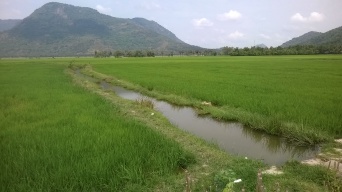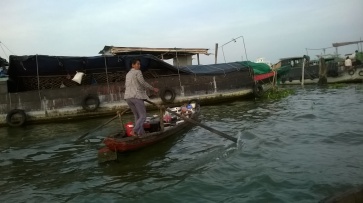Context and objectives
 The Mekong Delta is a significant contributor to sustainable livelihoods in Vietnam. It is also subject to multiple and complex threats: The construction of upstream hydropower dams is threatening land erosion and exacerbated floods and droughts; while climate change has given rise to heightened sea levels and more severe and frequent flooding.
The Mekong Delta is a significant contributor to sustainable livelihoods in Vietnam. It is also subject to multiple and complex threats: The construction of upstream hydropower dams is threatening land erosion and exacerbated floods and droughts; while climate change has given rise to heightened sea levels and more severe and frequent flooding.
These threats are made worse by planning failures. There is an increasing need for policy makers to formulate flood management policies and strategies that work for a diverse range of stakeholders with different livelihood strategies and to bridge local/lay and professional/scientific knowledges. This project aims to:
- explore the potential for participatory tools for natural flood management and decision-support based on existing hydraulic engineering expertise in Vietnam
- identify the facilitators and barriers to the integration of participatory flood risk assessment into policy making
- conduct interdisciplinary training workshops in flood management, local knowledge systems, watershed governance and ongoing policy reform in disaster and flood management
- build local capacity by contributing to the Masters programmes of Thuy Loi University and engaging local communities in the pursuit of collaborative solutions to flooding
- set up a Stakeholder Competency Group with representatives of the North Vam Nao irrigation project to create a platform for project co-design and knowledge sharing.
Methodology
To do so, the project aims at allying current interdisciplinary thinking around flooding with established approaches. The aim is to establish new practices, methodological and conceptual approaches to the study of integrated river and delta management to reconcile competition between agricultural, industrial and household users, local and national authorities, rural and urban regions, as well as national developmen t needs and local sustainabilities. In particular we aim at developing bottom-up approaches that supplement existing stakeholder engagement activities by mobilising local/lay knowledges in creative and imaginative ways.
t needs and local sustainabilities. In particular we aim at developing bottom-up approaches that supplement existing stakeholder engagement activities by mobilising local/lay knowledges in creative and imaginative ways.
Research into IWRM in the UK is characterised, increasingly, by an interdisciplinary and contextual approach. The work of Paul Selman and colleagues (Selman et al 2010), for example, has highlighted the importance (and potential benefits) of an ‘imaginative engagement’ with rivers and other water formations; one that draws on, inter alia, arts-based and new media approaches to increasing local awareness of and capacity for sustainable use. A similar ethos imbues other recently funded work. The ESRC funded project ‘sustainable flood memories’, for example, introduces the concept of a ‘watery sense of place’ (McEwen and Jones 2012) and emphasises the role and importance of local/lay flood knowledges in strategies of resilience and adaptation.
The thrust of this thinking is to move flood protection from a focus on dominant, top-down technological interventions – which often reflect external views on floods – to approaches that directly take into account the views and experiences (and pre-reflective practices) of people living in the flooded areas.